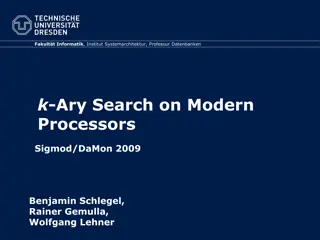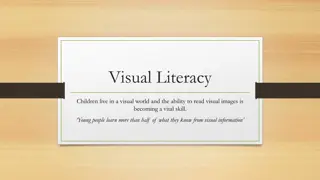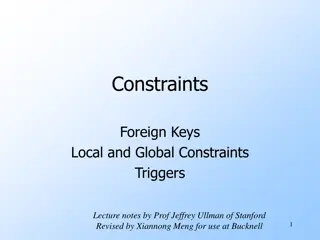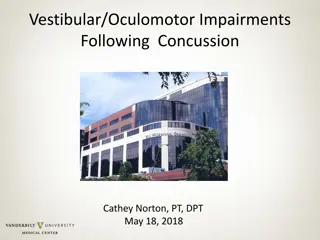Covert Visual Search and Effective Oculomotor Range Constraints
The study delves into whether covert visual search is biologically limited by the Effective Oculomotor Range (EOMR), exploring neuropsychological evidence, eye movement studies, and participant measurements. It investigates the impact on visual search tasks, including color, orientation, and conjunction searches, shedding light on the role of EOMR in search efficiency and accuracy. Findings suggest that EOMR influences feature search speed and accuracy, presenting insights into Oculomotor Readiness theory and optimal feature search conditions. Authors Soazig Casteau, Daniel T. Smith, and collaborators offer valuable perspectives on the interplay between covert attention and oculomotor constraints.
Download Presentation

Please find below an Image/Link to download the presentation.
The content on the website is provided AS IS for your information and personal use only. It may not be sold, licensed, or shared on other websites without obtaining consent from the author. Download presentation by click this link. If you encounter any issues during the download, it is possible that the publisher has removed the file from their server.
E N D
Presentation Transcript
Is covert visual search biologically constrained by the Effective Oculomotor Range? Daniel T. Smith @AttentionLab Soazig Casteau @SoazigCasteau
Effective OculoMotor Range (EOMR) Range of locations directly accessible with a saccadic eye movement Neuropsychological evidence that covert attention limited by EOMR PSP (Rafal et al., 1989) VIth nerve palsy (Craighero et al., 2002) Ophthamoplegia (Smith et al., 2005) Duanes Syndrome (Gabay et al., 2010) Eye abduction studies have mixed results Craighero et al., (2005), Smith et al., (2012) Morgan & Smith (2015), Hanning et al., (2019) From: Torrejon, Alfonso & Callaghan, Victor & Hagras, Hani. (2013). Panoramic Audio and Video: towards an Immersive Learning experience.
What about when the eye is centred? Measured each participants Effective Oculomotor Range (EOMR) Exp.1: Exogenous : SOAs of 100, 200, 300 & 600ms Exp.2, Endogenous: SOAs of 400 & 700ms Exp.3: Both in same task Scaled by cortical magnification factor (Rovamo & Virsu, 1979) Casteau, S. & Smith, D.T. (2018). Cortex
OK, but does it work for visual search? Colour Orientation Conjunction
What about target absent trials? Conjunction Orientation Colour
Isnt this just an eccentricity effect? Feature Conjunction
Maybe people are slower but more accurate?
Discussion Presenting search arrays beyond the EOMR slowed feature search Did not elicit switch to serial search No effect on d (not a speed-accuracy trade-off) Accumulation rate is slowed? No effect of EOMR on conjunction search Optimal feature search occurs within EOMR Consistent with Oculomotor Readiness theory of Exogenous Orienting (Casteau & Smith 2019) Casteau, S., & Smith, D. T. (2019). Vision, 3(2), 17. http://www.mdpi.com/2411-5150/3/2/17.
Thanks Soazig Casteau Thomas Schenk & Stefan van der Stigchel
Progressive Supranuclear Palsy 10 people with PSP 15 people with Parkinson s Corsi blocks task Horizontal or vertical alignment Smith, D.T. & Archibald, N. (2018). Spatial Working Memory in Progressive Supranuclear Palsy. Cortex
Summary Motor theories of cognition hold attention & WM embodied in eye-movement system Exogenous attenton Endogenous attention Spatial WM Visual WM Eye-Abduction EOMR ? ? ? Neuropsychology Some, but not all aspects of visuospatial cognition are embodied in the motor system
Where next? Theory: A Motor Bias Theory of Attention Applications: Compensatory approaches to neuropsychological rehab? Dunhill Medical Trust grant to explore diagnosis of PSP Future directions: What about visual, spatial and motor imagery?
Patient AI Paralysis of the eyes Neurologically normal Smith, Rorden & Jackson (2004) Current Biology (14)9























